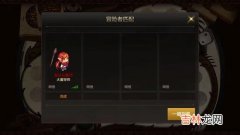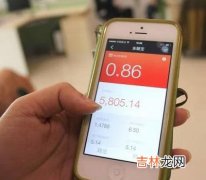Future<_ConnectionInfo> _getConnection(String uriHost, int uriPort, _ProxyConfiguration proxyConf, bool isSecure) { Iterator<_Proxy> proxies = proxyConf.proxies.iterator; Future<_ConnectionInfo> connect(error) { if (!proxies.moveNext()) return new Future.error(error); _Proxy proxy = proxies.current; String host = proxy.isDirect ? uriHost : proxy.host; int port = proxy.isDirect ? uriPort : proxy.port; return _getConnectionTarget(host, port, isSecure) .connect(uriHost, uriPort, proxy, this) // On error, continue with next proxy. .catchError(connect); } return connect(new HttpException("No proxies given"));}从代码中我们可以看到根据代理配置信息来将请求的host和port进行重置,然后创建真实的连接 。
跟踪以上源码我们发现dart中http请求是否走代理是需要配置的,而_findProxy变量和配置的代理信息有关 。
http__impl.dart文件中的_HttpClient类中定义了_findProxy的默认值
Function _findProxy = HttpClient.findProxyFromEnvironment;HttpClient类中findProxyFromEnvironment方法的实现
static String findProxyFromEnvironment(Uri url, {Map<String, String> environment}) { HttpOverrides overrides = HttpOverrides.current; if (overrides == null) { return _HttpClient._findProxyFromEnvironment(url, environment); } return overrides.findProxyFromEnvironment(url, environment);}_HttpClient类中_findProxyFromEnvironment方法的实现
static String _findProxyFromEnvironment( Uri url, Map<String, String> environment) { checkNoProxy(String option) { if (option == null) return null; Iterator<String> names = option.split(",").map((s) => s.trim()).iterator; while (names.moveNext()) { var name = names.current; if ((name.startsWith("[") && name.endsWith("]") && "[${url.host}]" == name) || (name.isNotEmpty && url.host.endsWith(name))) { return "DIRECT"; } } return null; } checkProxy(String option) { if (option == null) return null; option = option.trim(); if (option.isEmpty) return null; int pos = option.indexOf("://"); if (pos >= 0) { option = option.substring(pos + 3); } pos = option.indexOf("/"); if (pos >= 0) { option = option.substring(0, pos); } // Add default port if no port configured. if (option.indexOf("[") == 0) { var pos = option.lastIndexOf(":"); if (option.indexOf("]") > pos) option = "$option:1080"; } else { if (option.indexOf(":") == -1) option = "$option:1080"; } return "PROXY $option"; } // Default to using the process current environment. if (environment == null) environment = _platformEnvironmentCache; String proxyCfg; String noProxy = environment["no_proxy"]; if (noProxy == null) noProxy = environment["NO_PROXY"]; if ((proxyCfg = checkNoProxy(noProxy)) != null) { return proxyCfg; } if (url.scheme == "http") { String proxy = environment["http_proxy"]; if (proxy == null) proxy = environment["HTTP_PROXY"]; if ((proxyCfg = checkProxy(proxy)) != null) { return proxyCfg; } } else if (url.scheme == "https") { String proxy = environment["https_proxy"]; if (proxy == null) proxy = environment["HTTPS_PROXY"]; if ((proxyCfg = checkProxy(proxy)) != null) { return proxyCfg; } } return "DIRECT";}从以上代码中可以发现代理配置从environment中读取,设置代理时必须指定http_proxy或https_proxy等 。而从_openUrl方法实现中proxyConf = new _ProxyConfiguration(_findProxy(uri));得出默认情况下environment是为空的,所以要想在Flutter的http请求中使用代理,则要指定相应的代理配置,即设置httpClient.findProxy的值 。示例代码:
_getHttpData() async { var httpClient = new HttpClient(); httpClient.findProxy = (url) { return HttpClient.findProxyFromEnvironment(url, environment: {"http_proxy": 'http://192.168.124.7:8888',}); }; var uri = new Uri.http('t.weather.sojson.com', '/api/weather/city/101210101'); var request = await httpClient.getUrl(uri); var response = await request.close(); if (response.statusCode == 200) { print('请求成功'); var responseBody = await response.transform(Utf8Decoder()).join(); print('responseBody = $responseBody'); } else { print('请求失败'); }}
经验总结扩展阅读
- 《上传那些事儿之Nest与Koa》——文件格式怎么了!
- 山魁和山魈的区别
- 郁珠大结局是什么?
- 男左女右赵丽颖是哪一期?
- 电影追击者原型是什么?
- 路飞四档是第几集?
- 几个女的偷项链是什么电影?
- 百合铁花是什么电视?
- 白银帝国剧情详细介绍?
- 《穿越火线》怎么改房间名字(穿越火线怎么修改房间名最新)

















